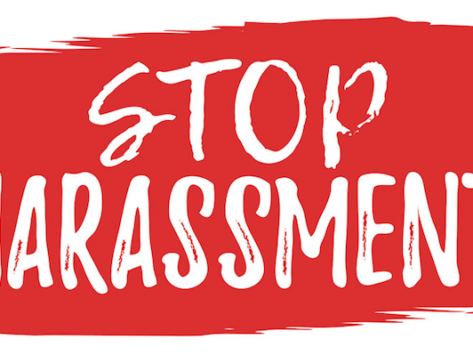Legislating Addiction
Legislating Addiction
Published in Daily Journal/California Lawyer
Addictive behavior—whether with drugs, alcohol, or your cell phone—has reached epidemic proportions. A lawyer calls for the Legislature to act.
In an era plagued by addiction and self-interest, it has become more critical than ever for legislators and community leaders to address epidemics in an honest way. It is no secret that economics have historically motivated human and corporate behavior, but when the repercussions of this approach start to affect a major segment of the population, it’s time to start paying attention and allocate much-needed resources accordingly.
OPIOID CRISIS
The opioid crisis has bulldozed through our nation and mercilessly crushed millions along the way. According to The National Institute on Drug Abuse, an estimated 2 million people in the United States suffered from substance use disorders related to prescription opioid pain relievers and more than 33,000 Americans died from opioid overdoses in 2015. The crisis has only ballooned since President Trump’s declaration of a public health emergency late last year.
As rehabilitation centers spawn, the realities behind the operation of some rehab facilities merits a discussion. Along the coast of sunny California, rehabilitation centers (and the recent spinoffs known as “sober living homes”) line the Pacific Ocean in a stretch known as the “Rehab Riviera.” With an estimated treatment cost ranging anywhere from $5,000-$25,000 for a 30-day program, this territory has also become big business.
Although these centers have built a reputation for housing celebrities in glitzy surroundings, they have received far different media coverage in recent years. With the promise of effective treatment and a better tomorrow, an avalanche of addicts has cascaded into California from every corner of the United States.
How these most vulnerable members of our society are treated once hooked and displaced raises major red flags. Many end up homeless after getting “curbed” the instant their insurance coverage runs dry, while others have even ended up dead.
According to press reports, one such death occurred in March 2016 at Pacific Coast Detox in Costa Mesa. News reports told of a 21-year old detox patient who died, and of video footage that revealed staffers had falsified medical records to reflect routine checks that had never been made. A year earlier, an Orange County jury returned a verdict against rehab centers Morningside Recovery and First House LLC in connection with the death of a young man who had an eating disorder. The jury found that the centers’ negligence led to the boy’s cardiac arrest.
Despite the increasing number of tragedies tainting the industry, legislators have failed to respond in kind. Although dozens of reform bills have been proposed, most have failed to receive meaningful review or have lingered in committee.
This reality proves far graver as a growing group of “sober living homes” operate with minimal oversight. Although AB285 is currently in the legislative pipeline to tighten California regulation of sober living homes, the bill has already encountered sharp criticism and undergone extensive markups in its infancy. Among other things, AB285 would add section 11834.19 to the California Health & Safety Code to define a “drug and alcohol free residence” as a residential property that operates as a cooperative living arrangement to provide an alcohol and drug free environment for persons recovering from alcoholism or drug abuse, or both, who seek a living environment that supports personal recovery.
Different from sober living homes and sober living environments, there are also “facilities providing 24-hour residential nonmedical services to eligible adults who are recovering from problems related to alcohol or other drug (AOD) misuse or abuse” sprouting up in residential neighborhoods under a cloak of protection from state and federal disability and discrimination laws. These residential treatment facilities are regulated by the state’s Department of Health Care Services (see http://www.dhcs.ca.gov/provgovpart/Pages/FacilityLicensing.aspx), but the DHCS may find itself struggling to keep up with the ever increasing number of facilities. According to a Department of Health Care Services representative, there are currently 44 analysts who overlook licensing compliance and complaints for the 1,018 licensed residential treatment programs in California.
Opioid addicts need help, but our system does too. How did big pharma penetrate so many households and why is it taking us so long to respond to the repercussions?
TECHNOLOGY IS ADDICTIVE TOO
There’s another industry ripe for legislation and addiction treatment: technology. The National Institute of Health (NIH) recently announced its funding of a study on Internet and addiction. Absent a classification, any problematic behavior does not formally qualify as a mental health disorder in the Diagnostic & Statistical Manual of Mental Disorders (DSM-5). Without this, insurance companies also refuse to cover any treatment.
Although the NIH study focuses on online gaming, other Internet-related studies will surely follow and with them, so will new legislation. In fact, some private entities have already taken the issue into their own hands. According to The Wall Street Journal, the world’s largest online gaming company Tencent Holdings Ltd. implemented a system to limit the total time Chinese children could access games throughout the day, citing addiction concerns. In early January 2018, two Apple shareholders publicly urged the tech giant to provide parents with better monitoring strategies for their minor’s phone use due to similar looming concerns.
At least for the time being, a company’s direct interference in child rearing would likely prove unpopular over individual parental discretion in the United States. However, society may slowly become receptive to other institutions like schools’ interventions with students if the problem persists.
Aside from gaming’s effects on children’s concentration and grades, research links the use of social media sites like Instagram and Snapchat to lower self-esteem and stunted empathy. Sadly, excessive use has also contributed to cyberbullying and tragedies both on and off-campus.
Even absent a formal classification, legislators have already directed attention toward responsible Internet usage. Cal. Educ. Code § 18030.5 currently mandates for public libraries and public schools to tailor special policies regarding minors’ access to the Internet. Since computers have woven into coursework, California’s Student Online Personal Information Protection Act (SOPIPA) has also addressed the privacy rights of students’ data including the sale of their information to third-party advertisers since 2016. See Cal. Bus. & Prof. Code § 22584.
According to Bloomberg, some countries have even attempted to eradicate gadget use altogether with France proposing a complete ban on smartphones in its primary and middle schools. Not surprisingly, schools may start instituting far stricter policies on recreational (or even curriculum-based) technology in years to come.
ADDICTION VICTIMS ARE NOT HOMOGENOUS—NOR ARE LEGAL SOLUTIONS
We need to remain wary of those aids capable of warping into crutches if misused. Although this proves no easy feat in a society overloaded with substances and gadgets, better foresight and proactive legislation can hopefully assist our “pharmaceutical” and “digital” first generation with aging gracefully from here on out.
View the original article in Daily Journal / California Lawyer







